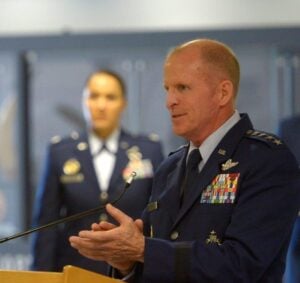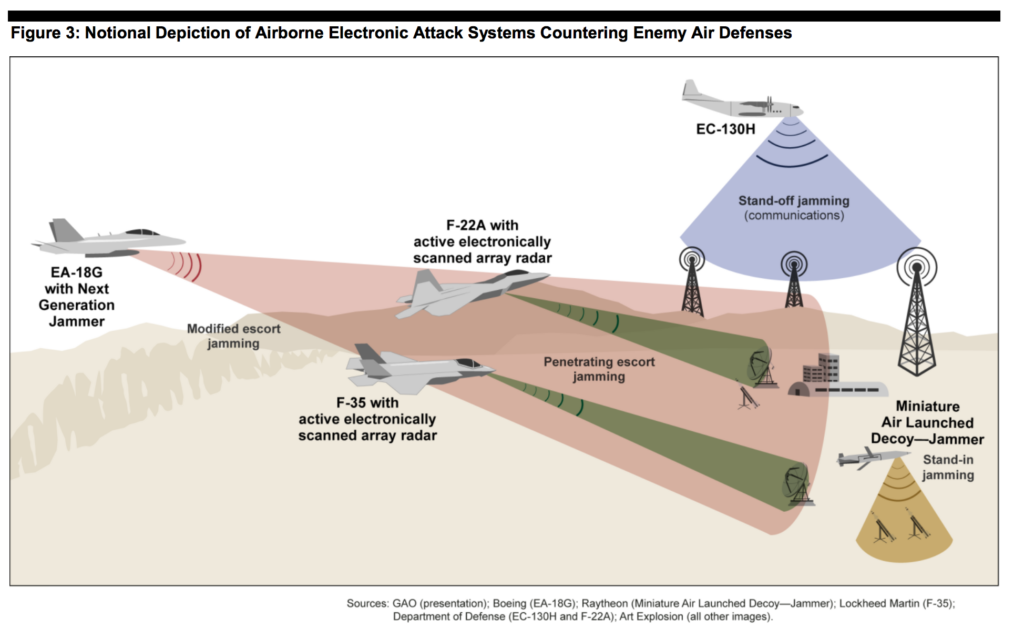
EC-130 Compass Call electronic warfare aircraft, used for an experimental cyber attack
WASHINGTON: After two decades of relative inattention, the Air Force is sharpening its commitment to Electronic Warfare because, in the words of its Vice Chief of Staff, “he that dominates the spectrum wins.” That includes the launch of a formal Enterprise Capability Collaboration Team (ECCT) to study the subject, Gen. Stephen Wilson said.

Gen. Stephen Wilson in 2016
But, the brainy vice-chief told the Association of Old Crows annual conference, one big decision has not yet been made. I asked if cyber would be excluded from the study, a key question for just how broad the effort will be. While there is much discussion about where electronic warfare ends and cyber begins, there’s little doubt that the two intertwine across large segments of wartime operations.
“We haven’t made up our mind yet,” Wilson replied. I pressed, asking which way he was leaning, to appreciative laughter from the audience. He didn’t bite.
The charter for the ECCT and the person leading it should be in place by the end of December, Wilson said. It should produce a report for Air Force Chief of Staff Gen. David Goldfein within the next 12 to 18 months.
An important part of the ECCT’s work may focus on how the F-35 Joint Strike Fighter, EA-18G Growler and a range of other aircraft should work together on EW. The F-35’s AESA radar and supporting EW hardware and software make possible what are still classified EW capabilities. One of them is almost certainly the ability to use so-called non-kinetic means to cripple enemy electronics, even if the radars, radios, and computers aren’t physically destroyed by bombs.

While older aircraft like the EA-18G and EC-130H jam enemy systems from a distance, stealthy F-22s and F-35s can conduct electronic warfare at close range. (GAO graphic)
For some hints as to what it may consider, look to the Defense Science Board report, “21st Century Military Operations in a Complex Electromagnetic Environment.” Wilson noted the joint Electronic Warfare Executive Committee has met several times and “has taken on board” the DSB’s recommendations, Wilson told the murder of Old Crows.
The Army and Air Force retired much of their EW arsenal after the Cold War and largely left the job to Navy and Marine Corps Prowler squadrons, bringing us to where we are today.
In other news, Wilson said Goldfein was briefed yesterday on the results of an ECCT Breaking D readers know intimately: the one about Multi-Domain Command and Control (MDC2). I checked with the Air Force this morning and there’s no information available yet on either the reception by Goldfein or the content of the brief itself, although I bet there’s little we haven’t reported. That, of course, may not apply to the classified portion of the briefing.
Sullivan: Defense industry ‘still underestimating’ global need for munitions
National Security Advisor Jake Sullivan said that there are “no plans” for another Ukraine supplemental at this point.


























